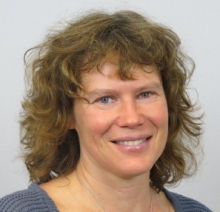Issue:
Switzerland is pushing ahead with upgrading of many of its sewage treatment plants to help cut the release of micropollutants to the aquatic environment. This presents opportunities for technology providers. It will also provide a valuable reference on the practicalities and costs of addressing this issue in the European Union and beyond. Keith Hayward provides an update on the Swiss plans, and the ongoing efforts to decide on detailed implementation.

Many countries, especially those in the European Union, are struggling to decide what should be done in response to growing concerns about micropollutants, particularly the low-level release of pharmaceuticals to the environment. In the meantime, Switzerland is one country that has decided the time for investment has arrived. The country has begun a 20 year process of upgrading its most significant wastewater treatment plants to tackle such chemicals, which currently pass through the plants and are released into its lakes and rivers.
Studies began in 2009 to assess the opportunity for using ozonation and activated carbon as post-treatment options for removing micropollutants. Based on the findings, work began in 2011 to revise Switzerland’s Water Protection Ordinance to require additional treatment at large or critical sewage treatment plants. The measures were approved nationally in March 2014 and took effect at the start of this year.
According to the Ordinance, micropollutant removal needs to be provided at all wastewater plants serving more than 80,000 inhabitants, at all treatment plants serving more than 24,000 inhabitants and discharging into lakes, and at treatment plants serving more than 8000 inhabitants and discharging into rivers, if the discharge represents more than 10% of the minimum flow. The deadline for implementation is 2035.
In all, around 100 of the country’s 700 wastewater treatment plants need additional treatment. The investment costs for this have been put at around CHF 1200 million, and the Swiss government announced late last year that a CHF 9 annual tax per person connected to a treatment plant would be introduced to provide a fund to cover 75% of the investment costs.
Early activity
Dr Pascal Wunderlin is coordinator for the Swiss Water Association (VSA) of the micropollutant process engineering initiative (www.micropoll.ch), a joint initiative with the country’s Federal Office for the Environment (FOEN) and the Federal Institute for Aquatic Research (Eawag) Eawag and FOEN. Wunderlin explains that the VSA platform aims to support stakeholders such as treatment plant operators, engineers, and the authorities of Switzerland’s 26 cantons with implementation of the requirements of the Ordinance. It supports knowledge transfer, both from research into practice and from plant operators who have implemented advanced treatment to other operators. It also supports wider national and international exchange of experience, and furthers discussion within working groups.

According to Wunderlin, the measures in the Ordinance address three goals – improving highly impacted waters, protecting important drinking water sources, and achieving an overall load reduction. The wastewater treatment plants identified will either need to be upgraded, or could potentially connect to a larger treatment plant.
He explains that there are currently two full-scale wastewater treatment plants that have already implemented a micropollutant removal step: the Neugut wastewater treatment plant, which has been fitted with full-scale ozonation treatment followed by a biologically active sand filtration; and the Bachwis wastewater treatment plant in Herisau, which has a full-scale powdered activated carbon treatment step comprising a contact reactor followed by sedimentation and filtration.
The 150,000 population equivalent Neugut wastewater treatment plant is in Dübendorf, near Zurich. The country’s first full-scale wastewater ozonation treatment came on line in 2014. The ozone reactor was installed after the secondary clarifier, with a final filtration step after the ozone treatment. Results released in May 2014 showed that use of an ozone concentration of 3.5mg/l was achieving removal of 80% of five indicator substances. Investment costs were put at CHF 3.27 million, with an additional energy requirement of 0.03kWh/m3.
This early activity on the treatment side is therefore already generating valuable process and cost insights. At the same time, the Swiss are also progressing in another important area: how to assess the removal of micropollutants.

fitted with ozonation (c) M Schachtler
The Federal Office for the Environment, along with Eawag and Envilab AG, have developed a testing protocol based on 12 substances that are found in municipal wastewater but are not removed by conventional processes. The list of substances includes one herbicide, mecoprop, and 11 pharmaceutical compounds. Of these, two are on the new Watch List of chemicals under observation in relation to the European Union’s Water Framework Directive: diclofenac, a painkiller that had been on the original Watch List; and clarithromycin, one of a group of antibiotics added to the Watch List last year. The testing protocol allows for testing of at least six of the compounds in a single run of liquid chromatography / mass spectrometry. This protocol will be used to monitor the micropollutant removal during treatment, which, says Wunderlin, needs to achieve an 80% elimination rate.
Further implementation
Work to progress with the upgrading needed to tackle micropollutants is moving forward on a number of fronts. Wunderlin explains, for example, that while the Ordinance came into effect at the start of the year, FOEN is still preparing some implementation guidelines, which are due to be published this year. Even so, construction on several projects is due to begin soon, with several plants in the planning phase, he says. Meanwhile, research and pilot-scale work continues.
Wunderlin explains that the timing of the improvements is in the hands of the cantonal authorities, who have the task of identifying the treatment plants where improvements are needed and of planning the upgrades taking account, for example, of the significance of the micropollutant issues for each location and the timing of any other expected upgrading at the plants. ‘Every canton basically has its own schedule,’ he notes.
The decision on what treatment process should be used lies more with the plant operators. ‘Basically the plant operators are deciding about the technology, usually based on some pre-evaluation studies carried out by the engineers,’ says Wunderlin. He explains that a test procedure was developed jointly by VSA, Eawag and FOEN to support such pre-project evaluation work. This allows wastewaters to be evaluated to determine whether ozonation would be suitable or not. ‘It is known that there are some wastewaters with special compositions, such as those with a share of wastewater from landfill leachates or waste incineration plants, that are not suitable for ozonation,’ he explains. The VSA platform is supporting the further uptake of this test procedure.
‘There are lots of applied research projects going on at the moment,’ says Wunderlin, adding that there is a current emphasis on working with existing technologies. Ozonation and powdered activated carbon adsoption are the main established options, but there are still knowledge gaps. ‘The separation of PAC from the wastewater is a field with lots of open questions,’ he notes. There is also the need for greater understanding around the use of granular activated carbon, and Wunderlin explains that among the applied research projects going on is a full-scale investigation of granular activated carbon filtration at the Furt wastewater treatment plant in Bülach. ‘There is a trend to investigate the combination of ozonation and activated carbon,’ he adds.
Efforts to move forward with wider implementation of the micropollutant wastewater controls have included, for example, a pilot plant that was run by Pöyry Switzerland from the start of March 2015 at the Rosenbergsau wastewater plant in the town of Au, in the east of the country near the Austrian border. The aim of the pilot was to provide the basis for full scale investment and operating costs. It involved testing of 12 micropollutants and the efficiency of ozonation for their removal, to determine ozone dosing, contact time and reactor size.
VSA will continue play its part in helping progress Switzerland’s action on micropollutants. As well as activities such as running events and disseminating research results, Wunderlin says this will include developing recommendations where appropriate, such as recent recommendations on hydraulic dimensioning and redundancy of micropollutant removal steps. ‘To inform the stakeholders and to provide activities for discussion and exchange is of great importance and interest at this stage of implementation,’ he adds.
See: European action on hazardous substances, micropollutants and pharmaceuticals
Keywords:
- Switzerland, micropollutants, municipal wastewater, sewage






